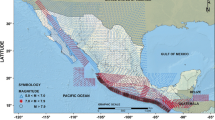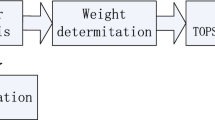Abstract
Based on a statistical analysis, we developed a methodology to determine the Risk Management Index (RMI) at the local level. The algorithm is transparent, relatively easy to update periodically by the affected communities themselves, and the results are easy to understand by public policymakers. The main characteristics of this tool are: (1) It considers disaster management issues at the local level; (2) RMI values are obtained using a statistical analysis; (3) levels of performance are classified in a scale of numbers ranging from 0 to 5, where 0 = nonexistent, 1 = low, 2 = incipient, 3 = significant, 4 = outstanding, and 5 = optimal; (4) the weight of the indicators is determined using the analytic hierarchy process. As case studies we applied this methodology to the districts of Iztapalapa and Xochimilco in Mexico City, Mexico. Our results indicate that, to date, the Xochimilco District has not implemented any actions designed to reduce risk or to provide financial protection. Low performance was measured also in risk identification and disaster management. The Iztapalapa District has an outstanding level of performance in risk identification. However, its score is low in activities related to risk reduction, disaster management, and financial protection. The RMIs obtained in both communities highlight the need for developing permanent programs for disaster prevention, mitigation, and response. The methodology used here is designed to aid in evaluating and understanding existing disaster management problems in a community and in guiding the decision-making processes to reduce the hazard and to conduct remedial actions at the local level.





Similar content being viewed by others
References
Alcantara-Ayala I (2001) Geomorphology, natural hazards, vulnerability and prevention of natural disasters in developing countries. Geomorphology 47:107–124
Birkman J (2007) Risk and vulnerability indicators at different scales: applicability, usefulness and policy implications. Environ Hazards 7:20–31
Birkmann J (ed) (2006) Measuring vulnerability to natural hazards—towards disaster-resilient societies. United Nations Press, Tokyo
Birkmann J, Wisner B (2006) Measuring the unmeasurable. The challenge of vulnerability. Source, No. 5/2006. United Nations University—Institute for Environment and Human Security, Bonn. http://www.ehs.unu.edu/file.php?id=212S. Accessed 1 Aug 2014
Cardona OD (2007) Indicadores de Riesgo y de Gestión del Riesgo de los Desastres: Resultados para Nicaragua. Inter-American Development Bank, p 45
Cardona OD, Hurtado JE, Duque G, Moreno A, Chardon AC, Velásquez LS, Prieto SD (2003) Indicators for risk measurement: fundamentals for a methodological approach. IADB/IDEA Program on Indicators for Disaster Risk Management, Universidad Nacional de Colombia, Manizales. http://idea.unalmzl.edu.co. Accessed 2 July 2014
Dilley M, Chen RS, Deichmann U, Lerner-Lam A, Arnold M (2005) Natural disaster hotspots. The World Bank, Hazard Management Unit. A Global Risk Analysis, Washington, DC
Inter-American Development Bank (2011) Indicadores de Riesgo de Desastre y Gestión de Riesgos, Programa para America latina y el Caribe: El Salvador. Notas Técnicas IDB-TN-276
Inter-American Development Bank (IADB)-Universidad Nacional de Colombia, Manizales, Instituto de Estudios Ambientales (UNC/IDEA) (2005) Indicators of disaster risk and risk management. Summary report, program for Latin America and the Caribbean. http://idea.unalmzl.edu.co. Accessed 11 June 2014
Saaty TL, Vargas LG (1991) Prediction, projection, and forecasting: applications of the analytical hierarchy process in economics, finance, politics, games, and sports. Kluwer, Boston
Schneiderbauer S, Ehrlich D (2006) Social levels and hazard (in) dependence in determining vulnerability. In: Birkmann J (ed) Measuring vulnerability to natural hazards—towards disaster resilient societies. United University Press, pp 78–102
Smith K (2001) Environmental Hazards: Assessing risk and reducing disaster, 3rd ed. Routledge, p 392
Suárez G, Novelo D, Mansilla E (2009) Performance evaluation of the seismic alert system (SAS) in Mexico City: a seismological and social perspective. Seismol Res Lett 80:707–716
Suárez-Olave DC, Carreño-Tibaduiza ML, Cardona-Arboleda OD (2007) Aplicación del Índice de Gestión de Riesgo a la Ciudad de Manizalez y su compración con Bogotá, Armenia y Pereira. Universidad de Colombia, Manizalez, instituto de Investigaciones Ambientales, p 14
UNAM Seismology GROUP (1986) The September 1985 Michoacan earthquakes: aftershock distribution and history of rupture. Geophys Res Lett 13:573–576
United Nations Development Programme (UNDP) (2004) Reducing disaster risk. A challenge for development. A Global Report, UNDP—Bureau for Crisis Prevention and Recovery (BRCP), New York. http://www.undp.org/bcpr/disred/rdr.htmS. Accessed 1 Aug 2014
Acknowledgments
The authors are grateful to an anonymous reviewer for his/her thoughtful review of this paper and providing helpful comments. We also express our appreciation to the staff of the Xochimilco and Iztapalapa districts of Mexico City who kindly provided their expertise, time, and data to estimate the Risk Management Index as case studies. We thank M. Viesca-Gold for her help in processing the data and preparing the initial figures. The project received grants from the Instituto de Geofísica and the Program to Support Research Projects and Technology Innovation of the National Autonomous University of Mexico (UNAM; PAPIIT Project No. IN118614).
Author information
Authors and Affiliations
Corresponding author
Rights and permissions
About this article
Cite this article
Novelo-Casanova, D.A., Suárez, G. Estimation of the Risk Management Index (RMI) using statistical analysis. Nat Hazards 77, 1501–1514 (2015). https://doi.org/10.1007/s11069-015-1663-4
Received:
Accepted:
Published:
Issue Date:
DOI: https://doi.org/10.1007/s11069-015-1663-4




